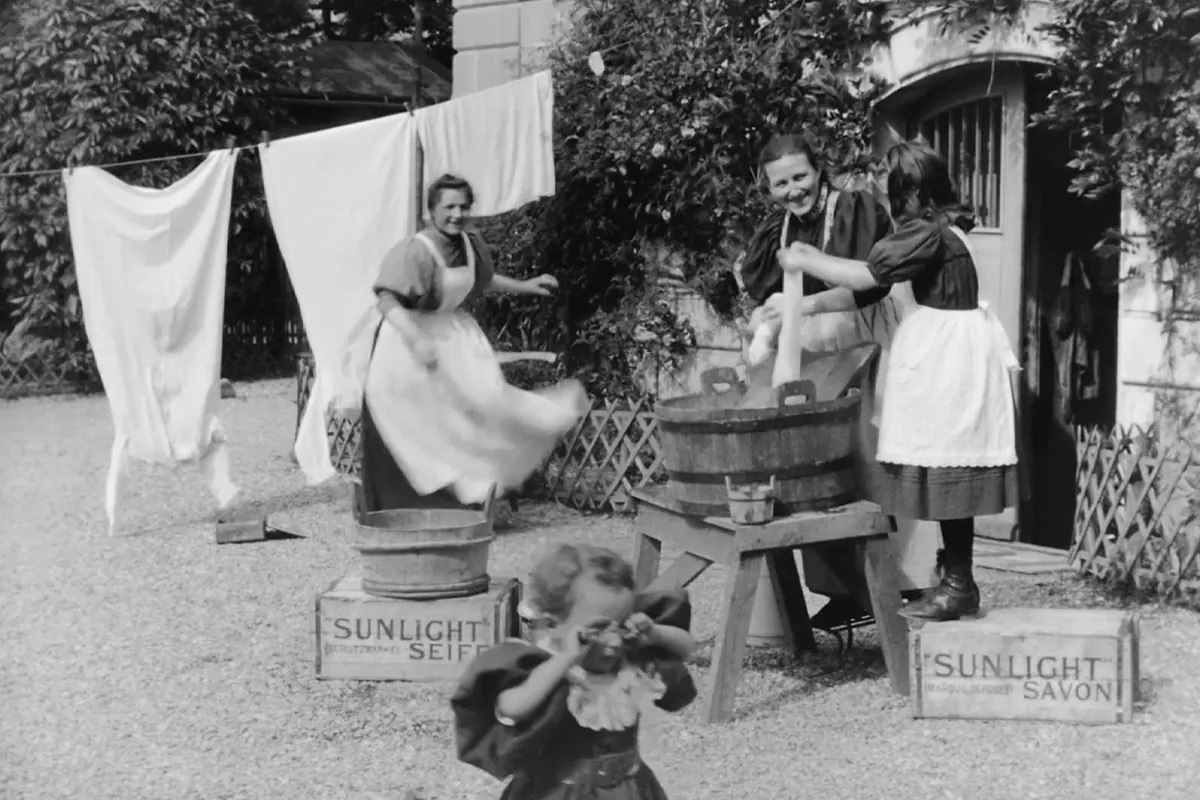There is a phrase at the end of 'Lumiere! The Adventure Continues' that Thierry Frémaux (Tullins, France, 1960) utters with a paradoxical mix of lightness and gravity: "Death will never be absolute." Up to that moment, the images shown by the director of the Cannes Film Festival and head of the Lumière Institute are a representation of the world from 130 years ago, from Venice to Japan, from childhood to old age. Images captured with the desire to show others what is happening, to preserve life.
A century and three decades after the Lumière brothers amazed humanity with the invention of the cinematograph, the world is very different, thanks in part to the changes brought about by their own invention. However, those early moving images captured by the camera continue to generate a fascination that is hard to explain. This is what Frémaux attempts to convey in 'Lumière, la aventura continúa'.
The film, presented at the last edition of the San Sebastián Film Festival, continues the path of disseminating those early films that Frémaux began in 2016. The Cannes director points out that in the 10 years from 1895 to 1905, the date of the last cinema screening, Louis Lumière and his team of cameramen scattered around the world filmed two thousand films to meet the public demand. Many of them were unreleased until now, when Frémaux has gathered them after a restoration process.
"I wanted to make a Lumière film with Lumière films," says Frémaux. "And bring Lumière's cinema back into the movie theater and to the cinema audience. So they can see Lumière just like they go to see Spielberg." Another way, according to the guardian of this legacy, to "reintegrate Louis Lumière back into the long history of what he invented." Because, he asserts, "he was an inventor, the last inventor. And also a director, the first director." Thus, among the fragments of this compilation is a panoramic view of Madrid's Puerta del Sol showing the ingenious system for horse-drawn trams to start and end their route. "It's a Lumière film, but also a Spanish film. It's ours, and yours too. Because it's a common memory, a common heritage," notes Frémaux. Just like that inaugural scene of the factory workers leaving, whose importance goes beyond the initial milestone: "The first character in the history of cinema is the people," he proclaims. "Cinema, from the beginning until today, is a way to show what human beings are. And Lumière understood that right away."
Those early cinematic works had a maximum duration of 50 seconds, which is what 17 meters of film captured. A format that, curiously, is now dominant again. "Within the images we can see on TikTok, there are also many beautiful things," admits Frémaux. "But Lumière's cinema represents everything that today's world detests: black and white, silent, with the obligation to wait, to be patient... That's why it's a way to cleanse the eyes. Because there is pollution in the eye, in the mind. And, in this way, we return to innocence. That idea of Picasso when he said he needed his whole life to draw like a child. Which is the same as Godard expresses in the film: 'We have to go back to ignorance. Because if we are ignorant, we will invent, we will create'." Hence his statement: "The most important and most forgotten figure in cinema is Lumière." And also his reflection: "It took us 130 years to say that Lumière is also there."
Frémaux explains that his work ("my life," he emphasizes) is to showcase the works of others. "Not mine," he adds. It is the thread that connects his work at Cannes with his institutional role at the Lyon organization that safeguards the brothers' legacy. "I am at the service of Lumière. That's why I do this," he explains.
And regarding the non-absoluteness of death, he offers a reflection. "The man of the 20th century is the man who went to the movies," he suggests. "Cinema invented something different. It did it for the first time in human history. For better and for worse. That's why, from the beginning, cinema needs an ethic." And then he gives an example: In 'Lumière, la aventura continúa,' there is a filming of a duel. "It's a way to show death through fiction, through reconstruction."
But nowadays, he laments, this approach is very different. "Claude Lanzmann [director of 'Shoah,' the monumental documentary about the genocide of Jews by the Nazis] said that there are really no images of what happened in the extermination camps. But now you can see decapitated people on the internet. Why? Because there is no author. There is no act of creation, no responsibility." In cinema, each image is a signature, the author's signature. On the internet, there is no signature, and therefore, no responsibility. Only the worst of the world. Without filter. Without ethics."
Hence, he states, the need to return to that nascent moment. "Throughout the 20th century, cinema controlled what its own identity was," he recalls, before addressing the need to 'educate' in cinema: "It's an act of education, teaching the language of images. Showing that one image plus another image has a different meaning. Sometimes at Cannes, we can see films with fantastic intentions but with a terrible result. Because there is no question about duty, about the identity of the image."
Time, however, has blurred the boundaries between what can and cannot be captured. "The only sure thing," Frémaux concludes, "is that this world of animated images is a world that we must respect. An important world."
